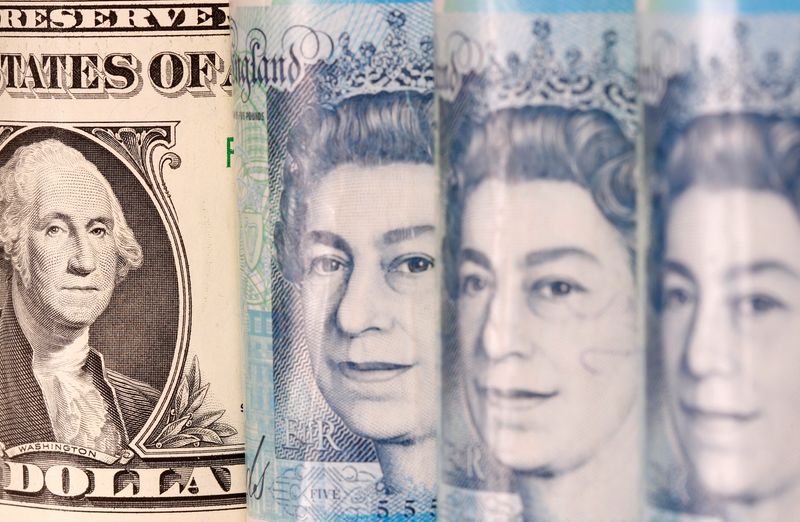LONDON (Reuters) - The pound held steady against the dollar on Monday but eased against the euro after two straight days of gains as investors considered the likelihood of interest rates remaining higher in Britain than in most other major economies next year.
The Bank of England last week pushed back against market pricing that shows investors see a strong chance of a first rate cut by May. A rate cut in June is now fully priced in.
Large speculators have added to their bullish positions in the pound in recent weeks, bringing their net long position - betting on the value of sterling rising - to its largest in about three months, according to the most recent weekly data from the U.S. financial markets regulator.
"Short interest has continued to fall whilst long interest has perked up, which suggests there could be further upside for the British pound in the weeks ahead," said City Index strategist Matt Simpson.
Sterling was steady at $1.2673 and down 0.25% against the euro at 86.19 pence, having risen for two straight trading days.
Markets, meanwhile, are pricing in a good chance of the European Central Bank (ECB) and the US Federal Reserve cutting rates as early as March, with cuts by May fully priced in.
The Bank of England is also expected to cut more slowly. About 80 basis points (bps) of cuts are priced into the UK rate futures market for 2024, while 150 bps are priced into the euro zone and U.S. derivatives markets.
Inflation has proved a lot more stubborn in the UK than in the euro zone or America. Core inflation, which strips out food and energy prices, is running at 5.7% in Britain, compared with 3.6% in the euro area and 4% in the United States.
The UK economy, meanwhile, is flat-lining and economic output is back at levels registered in January.
But the economy has avoided recession so far and a reading of business activity last week showed a surprise pick-up in growth and a small slowdown in price pressures in the services sector in early December.

Expectations that UK rates will have to stay higher for longer than those elsewhere have acted as a tailwind for the pound for most of this year.
Sterling has been one of the best-performing G10 currencies against the dollar in 2023. With a gain of about 5% so far this year, it ranks second only to the Swiss franc, which has gained 6%.